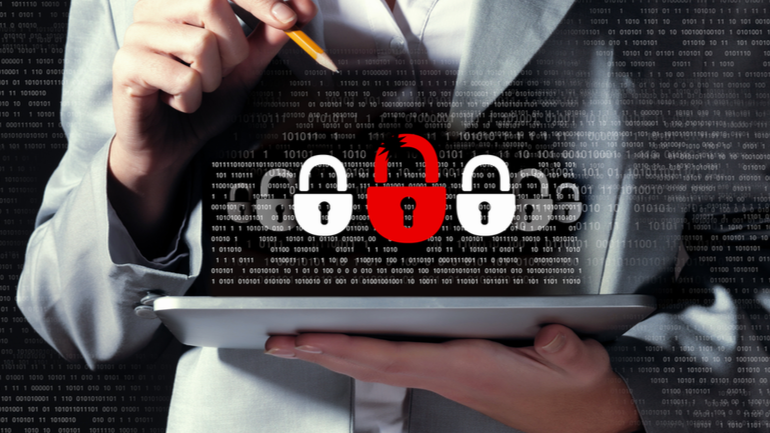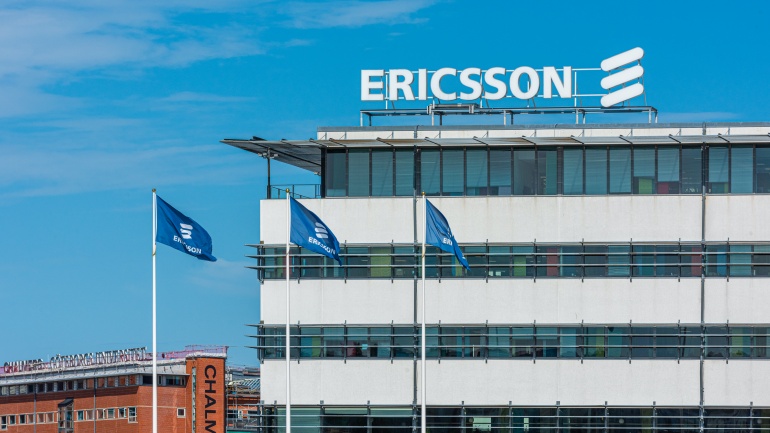The Federal Communications Commission (FCC) has named Kaspersky Lab, a Moscow-based cybersecurity business and developer of popular antivirus software, as one of the organizations posing an unacceptable danger to US national security. Kaspersky is the first Russian company to be added to the list, which is currently dominated by Chinese telecoms companies. The FCC has now released its most recent list of untrustworthy vendors, which includes, for the first time, a non-Chinese company: Kaspersky. Kaspersky joins Huawei Technologies, ZTE Corporation, Hytera, Hangzhou Hikvision Digital Technology Company, Dahua Technology Company, China Telecom (Americas) and China Mobile International USA on the list. Once a company has been included on the list, it is illegal for that organization to use federal subsidies, which are distributed through the FCC’s $8 billion yearly Universal Service Fund, or to buy any of its products or services. Domestic consumers, with the exception of government employees,…
Telecom firms in Europe are coming together to assist Ukrainians in staying connected, and they are using a variety of steps that differ from company to company and from country to country, depending on the markets in which they operate. Here are some of the steps that telecommunications firms are taking. Deutsche Telekom has started providing free calls and text messages to Ukraine. This initiative affects both individual and commercial clients making calls from landlines and mobile phones, as well as roaming in Ukraine. T-Mobile Polska and T-Mobile US, the operator’s Polish and US subsidiaries, both launched comparable deals. Verizon has waived costs for consumer and corporate users traveling to and from Ukraine. Customers with foreign coverage bolt-ons will not lose any minutes from their subscription, and voice and text roaming costs have been waived. Virgin Media O2 has lifted costs for calls to and from Ukraine,…
Five of Europe’s leading mobile operators – Deutsche Telekom, Orange, Telefónica, Telia and Vodafone – have teamed up to update and launch a new industry-wide Eco Rating system and motivate vendors to minimize the impact that their devices have on the environment. The Eco Rating labelling scheme is designed to supply detailed and accurate information to retailers on the effects that manufacturing, usage, transportation and disposal of smartphones have on the environment. This Eco Rating will encourage operators and customers to rate phones more extensively and underline the need for more sustainable electronic devices. From June 2021, mobile operators will start introducing Eco Rating at points of sale in 24 European countries, including the UK. The labeling system will label phones with scores to show how ecological and environment friendly the appliances are in their lifecycle. The score will be from 0 to 100, the higher the score,…
Tele2 and Nokia to provide SA 5G core network Tele2 has partnered with Nokia to provide its domestic market with a standalone (SA) 5G core network prior to the country’s spectrum auction, which prohibits operators from using ZTE or Huawei infrastructure. Nokia’s triumph over Ericsson’s comes as the company undergoes a comprehensive restructuring in order to focus on key business areas and get back in the global 5G retail market. The operators stated that the contract also covers the installation of the SA 5G core and the facilities for the transmission of voice-over-5G in Latvia, Lithuania and Estonia. The deployment of the infrastructure is expected to start later in 2021. Read more at: https://tinyurl.com/y5pxfu4l Telefónica has agreed to sell its tower portfolio The Spanish telecommunication giant Telefónica has come to the decision to sell its tower portfolio in Europe and Latin America to passive infrastructure specialist American Tower for €7.7…
The European Commission (EC) has appointed Nokia, a Finnish international telecommunications, information technology and consumer electronics company, to supervise Hexa-X, a primary 6G research project aimed at boosting the continent’s progress in developing the technology. The two-and-a-half-year Hexa-X initiative was funded by Horizon 2020, the EU’s research, and innovation program, and will start on January 1, 2021. The project is aimed at connecting the physical, digital and human worlds, firmly embedded in future wireless technologies. The project is led by Nokia, which coordinates the efforts, with Ericsson being assigned as the technical manager. The partners in the consortium are from academia and industry, including service providers, network providers and European research institutes. The partners include Orange, TIM, Telefonica, Intel and Siemens. The Finnish service provider said in a statement that it expects 6G to become commercially operational by 2030, following a normal ten-year intergenerational cycle and taking…
The two companies, Deutsche Telekom Global Carrier and Orange International Carriers, have announced the successful completion of a Proof of Concept (PoC) project to improve IPX services using blockchain technology. According to the statement, they were able to validate that blockchain can be used by operators to expedite the automatic transaction of end-to-end network KPIs between providers. This provides operators with an opportunity to offer improved quality of service (QoS) and enhance network performance forecasting and incident management. The cooperation between the carriers for this initiative was announced back in June. IPX systems are fundamental components for enabling international and domestic roaming services. Also, full-service level agreements (SLAs) on critical IPX networks are essential for ensuring that mobile operators can provide the best network quality. The companies said the results of the study will be presented to the GSMA. Emmanuel Rochas, CEO of Orange International Carriers, said:…
Ericsson has once again raised its year-end estimate for global 5G subscriptions to 220 million, while predicting that more than 1 billion people will have access to next-generation coverage over the same period. The company foresees that four out of ten mobile subscribers will be using 5G services by 2026. In their November 2020 Mobility Report, Ericsson predicted real 5G traction, as well as the progress in the deployment of new features in network and device areas, regardless of the concerns caused by the Covid-19 pandemic. Ericsson believes that 15% of the world’s population, or more than 1 billion people, will live in an area with 5G coverage by the end of 2020. They expect that number to grow to 60% or 3.5 billion consumers by 2026. Ericsson has also added another 30 million to the end-of-year estimate of the number of 5G subscribers, having previously announced the…
SIPTrunk Inc announces SIPTRUNK Platform SIPTrunk Inc. has announced the launch of managed IP telephony services through its SIP trunking reseller platform, SIPTRUNK. The SIPTRUNK platform allows service providers to manage multiple customers and service delivery via a practical interface based on cloud support and Tier-1 networks. SIPTRUNK meets the market’s need for a SIP trunk management and provisioning platform in order to support businesses, governmental agencies, telecommunications providers and telephone companies. According to the company, it is expected that by 2025, expenditure in the SIP trunking market will reach $28.8 billion. Read more at: https://tinyurl.com/y835ctxf UK’s fiber startup Lumenisity enters the market The UK start-up company Lumenisity has entered the market and released its first commercial products. Lumenisity was created to promote breakthroughs in the creation of hollowcore optical fiber. According to the company, data moves 50% faster in a hollowcore fiber, as the light travels through the air…
Ribbon announces hybrid slicing for 5G Ribbon Communications, a provider of real time IP-based communications and software solutions, announced that it has partnered with Xilinx Inc. to develop a 5G hybrid slicing solution for next-generation networks. Slicing is important in 5G, as it enables the separate 5G integral service classes. Hard slicing is necessary to meet the strict requirements for availability, bandwidth and security of highly sensitive services, while soft slicing provides benign insulation for services with a lower critical limit value. Ribbon will highlight its 5G solutions, including hybrid slicing, during its 5G Perspectives virtual event on September 14, 2020. Read more at: https://tinyurl.com/y6tm8bqa Oi sells its mobile assets to Claro, Telefónica and TIM Three operators, Claro, Telefónica and TIM, formerly known as Telecom Italia, have won the bid for the Brazilian operator Oi’s mobile assets valued at more than $3 billion. In the past, these operators had a…
Australia to invest a record A$1.35bn in cybersecurity The Australian government has announced an AUS USD 1.35 billion program to combat the rise in cybersecurity threats that have intensified in recent months. This initiative, named the Cyber Enhanced Situational Awareness and Response (CESAR) package, will seek to identify more threats, fight foreign cybercriminals and build stronger partnerships within the industry. The nation’s largest ever investment in cybersecurity will supercharge the Australian Signals Directorate (ASD) and the Australian Cyber Security Centre. Prime Minister Scott Morrison said, “My government’s record investment in our nation’s cyber security will help ensure we have the tools and capabilities we need to fight back and keep Australians safe.” Read more at https://tinyurl.com/ya8q3xsl India has banned TikTok, WeChat, and other China-based apps The Indian government has banned 59 Chinese-made apps, including TikTok and WeChat, over concerns that “they are engaged in activities which are prejudicial to sovereignty…













